7 Best Facewash Tips For Oily Skin In India In 2025
Introduction: Navigating Oily Skin Care in 2025 – What You Must Know
- One of the most challenging aspects of a daily skincare regimen can be controlling oily skin, particularly in a nation like India where regional variations in humidity, pollution, and climate can be significant.
- You’re not alone if you’ve ever battled with greasy skin, acne, or clogged pores.
- Best Facewash Tips for Oily Skin in India, Millions of people of all ages suffer with oily skin, and since 2025 will bring a slew of new skincare products and natural cures, it’s more crucial than ever to know how to take care of your skin type.
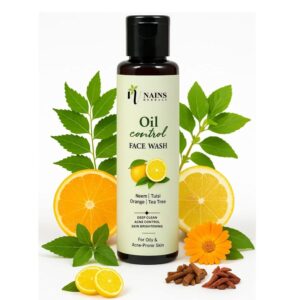
- Why This Guide Matters:
- We’ll go over the top 7 facewash recommendations for oily skin in India in this blog, which are based on dermatologist recommendations, skincare studies, and actual user experiences.
- These suggestions are tailored to the Indian environment, skin types, and lifestyle considerations that are sometimes disregarded in general skincare guidelines, regardless matter whether you’re an adult with chronic oiliness and acne or a youngster just starting out with skincare.
- This guide’s recommendations are based on the fundamentals of dermatology, Ayurveda, and contemporary skincare science rather than just current trends.
- Our suggestions are specifically designed for Indian users in 2025, taking into account changing environmental factors including increased pollution, blue light exposure, and the effects of stress and nutrition on skin health.
- What Makes Oily Skin Different?
- Excessive production of sebum (natural oil) by hyperactive sebaceous glands causes oily skin. Excess oil can block pores, trap debris, and cause acne, even though sebum is necessary to maintain the skin barrier. Typical difficulties consist of:
- slick or shiny look, particularly around the T-zone
- Larger pores
- Regular whiteheads and blackheads
- Post-inflammatory marks and acne
- Indians have a vast range of skin tones and sensitivities, which further complicates the management of oily skin.
- Climate zones also have a significant impact on how skin responds to cosmetics, ranging from the tropical humidity of Kerala to the dry heat of Rajasthan.
- For that reason, you may rely on the skin-type-specific and region-specific recommendations this site provides.
1. Understand Your Skin Type Before Choosing a Facewash
- Knowing your precise skin type is the first crucial step in selecting the best face cleanser.
- With so many skincare products on the market in India in 2025, choosing the wrong one could have more negative effects than positive ones.
- This is particularly true for people with oily skin, which frequently coexists with other skin issues including combination, sensitivity, or acne.
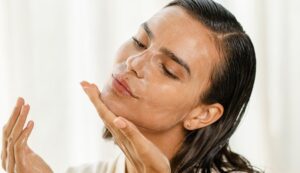
- The Significance of This:
- Because their face feels sticky by noon, many people assume they have oily skin.
- However, each person may experience oily skin in a different way.
- Some people with mixed skin may have dry cheeks but an oilier T-zone (forehead, nose, and chin).
- Others may have irritation, outbreaks, and plugged pores, all of which could be signs of sensitive oily skin or acne.
- Making use of the incorrect kind of cleaner
- Expert Insight: Know the Differences
- Let’s examine the main distinctions between combination, oily, and acne-prone skin types:
- oily skin: Excess sebum is produced all over the face by people with oily skin. Particularly in the morning or right after washing, pores may seem larger and skin may appear glossy. A facewash that eliminates oil without stripping the skin is necessary for this type.
- combination skin: Dry to normal cheekbones and an oily T-zone are characteristics of combination skin. Certain regions may get dry when using a powerful face cleanser designed for oily skin. Here, a dual-action cleanser or balanced product works well.
- Acne-Prone Oily Skin: While acne is not a problem for everyone with oily skin, those who do require a facewash that contains antibacterial and exfoliating ingredients like niacinamide, tea tree oil, or salicylic acid. These components prevent clogged pipes in addition to controlling oil.
How to Identify Your Skin Type at Home:
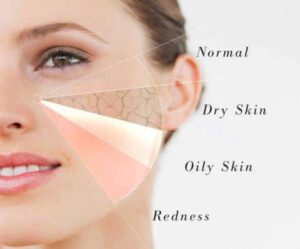
The bare-faced test is a quick and easy method to determine your skin type:
- Use a mild cleanser to cleanse your face.
- For thirty to forty-five minutes, don’t do anything to it.
- Take note of your skin’s appearance and feel.
- You have greasy skin if it feels that way all over.
- You have mixed skin if your cheeks feel tight but just your T-zone is shiny.
- If you notice redness, oil, and breakouts, your skin is probably oily and prone to acne.
- Buzzwords like “oil-free” and “for all skin types,” which are used in many products in 2025, should not be taken at face value. Examine the ingredient list and make sure it fits your skin type. For instance:
- Oily skin: Seek out gel-based cleansers that contain clay or salicylic acid.
- Select gentle foamy or creamy face cleansers with balancing ingredients like aloe vera or green tea if you have combination skin.
- Choose medications or dermatologist-approved products with active ingredients like sulfur or benzoyl peroxide if you have acne-prone skin.
2. Look for Ingredients That Control Sebum Production
- Selecting a facewash with the appropriate components, particularly those that aid in regulating sebum production, is a crucial next step in your oily skin care regimen after determining your skin type.
- Best Facewash Tips for Oily Skin in India In 2025, Indian customers are increasingly making educated decisions based on what’s inside the bottle rather than merely the brand name on the label as skincare science advances and ingredient transparency gains traction.
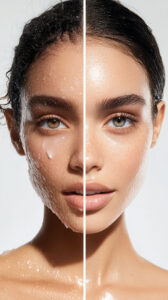
- The Significance of Sebum Control:
- The natural oil that your skin produces to keep it nourished and protected is called sebum.
- Excess oil, however, results from overactive sebaceous glands, which are frequently brought on by hormone fluctuations, stress, environmental factors, or even excessive bathing.
- This can lead to acne, whiteheads, and blackheads by clogging pores and drawing dirt.
- Long-term skin health depends on the ability of the proper substances to control oil without compromising the skin’s natural barrier.
- Expert-Recommended Ingredients for Oily Skin:
- Three powerful components are frequently suggested by physicians and skincare specialists for controlling sebum:
- Acid salicylic
Salicylic acid is an oil-soluble beta hydroxy acid (BHA) that can enter pores deeply to eliminate pollutants, dead skin cells, and excess oil. Additionally, it has anti-inflammatory properties and lessens acne-related redness. - Ideal For: Sebum-prone and oily skin Formulation
- Tip: For optimal effects, use daily facewashes with a concentration of 0.5% to 2%.
- Oil of Tea Trees:
This all-natural antibacterial agent is well-known for its capacity to regulate oil production, lessen germs that cause acne, and reduce inflammation. In India, where perspiration, humidity, and pollution exacerbate breakouts, it is very helpful. - Ideal For: Sensitive, oily, combo, and acne-prone skin Formulation
- Tip: To prevent irritation, make sure it’s appropriately diluted in the product.
- Vitamin B3 (niacinamide):
- Niacinamide is a multipurpose component that improves skin texture overall, lowers the appearance of pores, and controls sebum production.
- Additionally, it reduces post-acne scars and fortifies the skin barrier.
- Ideal For: Sensitive skin and all other types of oily skin Formulation
- Tip: For mild, everyday use, look for a 2%–5% concentration.
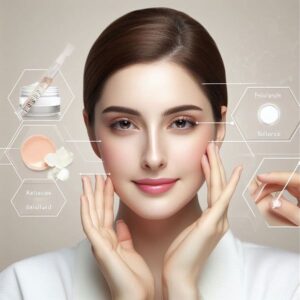
- Be wary of strong alcohols, perfumes, and sulfates when searching for substances that manage sebum.
- Rebound oil production, a condition where your skin tries to make up for dryness by creating even more oil, might result from these stripping agents.
- Expert Advice: Become an Expert at Reading Labels
- By 2025, Indian skincare companies will be more open about their ingredients. Search for phrases such as:
- Oil control
- Sebum-regulating
- Non-comedogenic
- Dermatologist-tested
- Steer clear of marketing claims alone.
- Flip the product over and look at the ingredient list.
- The active substances that regulate sebum should preferably be in the top five to seven ingredients.
3. Choose Gel-Based or Foam-Based Formulas
- The texture and base of the product are just as important as the ingredients when choosing a facewash for oily skin.
- One obvious rule stands out among the increasingly knowledgeable skincare consumers in India in 2025: avoid creamy or oil-based cleansers and instead choose gel- or foam-based ones.
- This minor adjustment can have a big effect on how your skin acts all day.
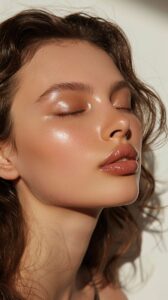
- The Importance of Texture for Oily Skin:
- Deep yet gentle washing is necessary for oily skin.
- Cleansers that are based on gel and foam are designed to dissolve excess oil, remove dirt, and unclog clogged pores without being overly thick or oily.
- Conversely, oil-based and creamy cleansers are typically made for skin types that are sensitive or dry.
- They could leave behind a hydrating layer that clogs pores or makes oily skin appear more shiny, which can exacerbate the condition.
- Professional Guidance: The Science of Gel and Foam Cleaners
- Let’s examine how the common facewash textures for oily skin differ from one another:
- Cleaners Based on Gel
- These water-based, lightweight solutions are made to cleanse the skin without making it too dry. They frequently include substances that help reduce sebum and reduce inflammation, such as niacinamide, green tea, and salicylic acid.
- Perfect for: Combination, oily, and acne-prone skin
- Benefits of Texture: Mild and revitalizing; ideal for Indian climates
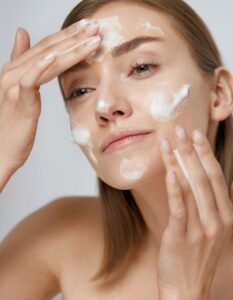
- ✅ Cleaners Based on Foam
- When pumped or rubbed into the skin, these airy, sudsy cleansers expand. They are a popular option for extremely oily skin types because of their exceptional ability to remove oil and debris.
- Perfect for: Skin that is too humid and greasy
- Benefit of Texture: Gives an impression of deep cleaning; ideal for hot and muggy climates
- ❌ Cleaners with an oil or cream base
- These thicker formulations are great for dry skin, but they can leave a residue that clogs pores and causes breakouts for oily skin types.
- Steer clear if you have combination, oily, or acne-prone skin.
- A drawback of the texture is that it might exacerbate oiliness and cause comedones (blackheads and whiteheads).
- Advice: Coordinate Texture with Season
- The varied climate of India also contributes.
- Foam-based cleansers are great for getting rid of sweat and dirt during the humid summer months.
- Gel-based cleansers provide a balance by cleaning without over-drying during drier winters.
- Additionally, using a gel or foam facewash following a mild micellar water cleansing can be the ideal two-step procedure to avoid residue buildup if you wear sunscreen or makeup every day.
4. Avoid Harsh Chemicals and Fragrances
- Adhere to non-comedogenic, dermatologist-tested choices.
- In India’s changing skincare market in 2025, consumers are paying more attention to ingredients than in the past.
- Avoiding harsh chemicals and artificial perfumes in your face wash is one of the most crucial rules for taking care of oily skin.
- Even though these ingredients could give a product a nice scent or attractive appearance, they might actually cause more harm than good, particularly for skin that is oily or prone to acne.

- Why Harsh Chemicals Are a Problem for Oily Skin
- Excessive shine, frequent breakouts, and enlarged pores are already common with oily skin.
- Your skin may react to harsh chemicals like sulfates, parabens, and artificial dyes by producing more oil, becoming irritated, or even becoming sensitive over time.
- The skin’s natural barrier may be compromised, leaving it more susceptible to microorganisms and other contaminants.
- Ingredients to be aware of:
- Sodium Lauryl Sulfate (SLS) and Sodium Laureth Sulfate (SLES) aggressively remove natural oils, which increases sebum production.
- Preservatives called parabens have been connected to hormone instability.
- Alcohols and synthetic colors can clog pores and cause redness and inflammation.
- One of the main causes of breakouts and allergic reactions is artificial fragrance, or perfume.
Why Fragrance-Free and Non-Comedogenic Matters:
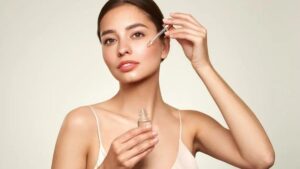
- In order to offer a luxurious experience, many mass-market facewashes contain fragrance; yet, in the skincare industry, fragrance is the leading cause of allergic contact dermatitis.
- Fragrances can cause itching, redness, or even flare-ups of acne in people with oily skin types, particularly in the hot and muggy parts of India.
- Rather, choose goods with the following labels:
- Free of fragrance or hypoallergenic
- Dermatologically examined
- Non-comedogenic (not pore-clogging)
- These labels, which are frequently backed by dermatologist recommendations or scientific research, show that a product is safer, especially for sensitive, acne-prone, or oily skin types.
- Real-World Illustration
- Suppose you purchase a face cleanser that has been infused with alcohol and aroma to give it a “fresh” feel. Your skin begins to produce more oil than it did a few days ago.
- Why? Because harsh substances cause your skin to become dry, which sets off a vicious cycle in which your sebaceous glands overcompensate by creating even more oil.
- This is frequently observed in people with oily skin who inadvertently select harsh drugstore products without reading the label.
- For safety, look for these tags:
- Sulfate-free
- Paraben-free
- No alcohol
- Dermatological examination
- Non-comedogenic
- Balanced pH
5. Wash Your Face Twice a Day — No More, No Less
- As crucial as the product you use is the frequency of cleansing when it comes to oily skin care.
- The golden rule, as agreed upon by dermatologists and skincare specialists in India in 2025, is to wash your face twice a day, no more, no less.
- The secret to controlling sebum and preserving a healthy skin balance is knowing why excessive washing can exacerbate oily skin.

- The Science of Oil Production and Purification:
- In order to defend against dryness, pollution, and bacterial invasion, our skin naturally produces sebum.
- You lose too much of this natural oil when you wash your face too often, especially with harsh cleansers.
- Your sebaceous glands go into overdrive as a result, creating even more oil to make up for it.
- The outcome? an oily cycle that might be challenging to break.
- Rebound oiliness is a common mistake made by many people with oily skin who want to get rid of shine or pimples as soon as possible.
- The Benefits of Cleaning Twice a Day: Morning Cleaning Sweat and extra oil buildup throughout the night are eliminated by washing your face in the morning.
- It revitalizes your skin and gets it ready for the day, which improves the way moisturizers and sunscreens are absorbed.
- Evening Cleansing: Your skin has been exposed to perspiration, cosmetics, pollutants, and grime over the night.
- In addition to allowing your skin to heal itself as you sleep, a mild cleanse helps get rid of these pollutants to avoid blocked pores and breakouts.

- How to Make the Most of Your Twice-Daily Schedule:
- Make use of a mild cleanser designed for oily skin that is gel or foam based.
- Use lukewarm water instead of boiling water, which might cause skin irritation.
- Rather than rubbing your face dry, gently pat it dry with a fresh towel.
- Use a mild, oil-free moisturizer after cleansing to keep your skin hydrated without adding extra oil.
- What Occurs If You Wash Too Much?
- Increased Oiliness: Your skin produces more sebum in response to dryness.
- Skin irritation: Redness and sensitivity are brought on by excessive cleaning, which damages the skin’s protective layer.
- Acne Breakouts: Excessive washing can cause skin inflammation, which leads to pimples.
- Dry Patches: Surprisingly, excessive cleaning can cause flaky, dry areas to appear on even oily skin.
6. Follow Up with a Light, Oil-Free Moisturizer
- Many people with oily skin make the mistake of thinking that moisturizing will simply make their skin greasier and produce more oil.
- This is a widespread misconception that needs to be dispelled, particularly in 2025 when Indian skincare knowledge has advanced and become more grounded in science.
- After cleansing, it’s crucial to use a mild, oil-free moisturizer to preserve skin balance and stop overproduction of oil.
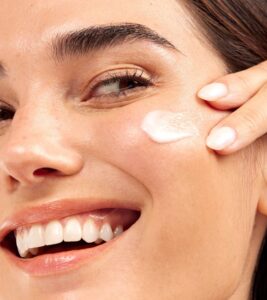
- Why Moisturizing Is Crucial for Oily Skin:
- Excess sebum produced by oily skin does not indicate that the skin is moisturized.
- Actually, dehydration can result from removing your skin’s natural moisture barrier through excessive cleaning or severe product use.
- Your skin creates more oil to make up for the deficiency in moisture, which is a vicious cycle.
- Using the right moisturizer to hydrate the skin aids in:
- Restore and preserve the moisture barrier of the skin.
- Reduce excessive oil production by letting the skin know it’s getting enough water.
- Avoid dryness and irritation brought on by environmental variables or cleaning agents.
What to Look for in a Moisturizer for Oily Skin:

- Selecting the appropriate moisturizer is essential. Dermatologists and skincare specialists advise the following for those with oily skin types:
- Formulations without oil: These moisturizers provide moisture without leaving behind any oily residue.
- Non-comedogenic: Products that are non-comedogenic are made to prevent pore blockage, which lowers the chance of breakouts.
- Textures that are water-based, gel-based, or lightweight soak rapidly and create a matte finish, making them ideal for India’s hot and muggy climate.
- Components including glycerin, hyaluronic acid, and niacinamide help calm and control oil.
- Professional Suggestions:
- According to renowned dermatologist Dr. Anjali Mehta of Mumbai, “Many of my patients with oily skin are afraid of getting more shine, so they are reluctant to moisturize.” On the other hand, the proper moisturizer can greatly enhance skin texture and balance oil production. Choosing non-comedogenic, lightweight choices is crucial.
- Similar to this, the Indian Association of Dermatologists (IADVL) emphasizes that the key to having healthy skin, even if you have oily skin, is staying hydrated.
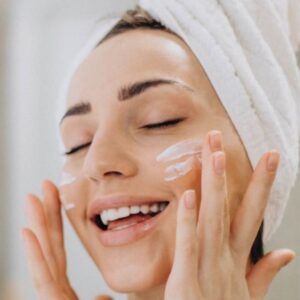
- How It Operates:
- Hydration keeps skin cells healthy, stops water loss, and preserves the skin’s natural moisture barrier.
- Your skin no longer has to make up for dryness when it is properly hydrated, which tells the sebaceous glands to produce less oil. Over time, this equilibrium leads to less shine and fewer breakouts.
- Useful Advice for Applying Moisturizer:
- To seal in moisture, use a moisturizer as soon as possible after cleansing, while your skin is still slightly damp.
- Apply a pea-sized amount to your face and neck and massage gently.
- For additional shine reduction, choose products with the labels “oil control” or “matte finish.”
- Steer clear of thick creams or treatments that include occlusive oils, such as mineral or coconut oil, as these might clog pores.
7. Try India-Specific Facewash Brands Made for Humid Weather
- Selecting a facewash made especially for Indian skin and weather conditions is essential, especially for oily skin types, in a country like India where the climate varies greatly but is primarily hot and humid for a large portion of the year.
- The Indian skincare market has changed dramatically by 2025, with numerous companies now producing goods that tackle the particular difficulties brought on by the nation’s environment and variety of skin types.

- The Importance of Humidity for Oily Skin:
- The production of perspiration and sebum is increased by humidity, which can make the skin feel oily and sticky and make it more vulnerable to acne and clogged pores.
- Many international skincare companies create products for arid or temperate regions, which may not be suitable for India’s extreme heat and humidity.
- Using a face wash made with the climate of India in mind gives you better control over perspiration and oil, and it keeps your skin feeling clean all day.
- Benefits of India-Specific Formulations:
- Facewash companies with a focus on India design their products to:
- In humid situations, balance too much oil without making the skin too dry.
- Incorporate components that are appropriate for Indian skin types and issues, such sandalwood, aloe vera, neem, and turmeric, which are all recognized for their calming and antibacterial qualities.
- Address the harm caused by pollution, which is a significant issue in Indian cities.
- Offer quick-absorbing, non-greasy textures that go well with the hot weather. Facewash companies with a focus on India design their products to:
- In humid situations, balance too much oil without making the skin too dry.
- Incorporate components that are appropriate for Indian skin types and issues, such sandalwood, aloe vera, neem, and turmeric, which are all recognized for their calming and antibacterial qualities.
- Address the harm caused by pollution, which is a significant issue in Indian cities.
- Offer quick-absorbing, non-greasy textures that go well with the hot weather.
- How to Pick the Best Brand for Yourself:
- Seek out face cleansers that have natural antibacterial components such as tulsi, tea tree oil, or neem.
- Choose products for mattifying, oil-control, or oily/acne-prone skin.
- Look for labels that state that there are no harsh chemicals, parabens, or sulfates.
- Read reviews from Indian users and consult skincare professionals if needed.
FAQS
1. What type of facewash is best for oily skin in India’s humid weather?
A gel-based or foam-based facewash that is oil-free, non-comedogenic, and formulated for oily or acne-prone skin works best in India’s hot and humid climate. Ingredients like salicylic acid, niacinamide, and tea tree oil are ideal for controlling excess oil.
2. How many times should I wash my face if I have oily skin?
Dermatologists recommend washing your face twice a day—once in the morning and once before bed. Overwashing can strip the skin’s natural moisture, causing it to produce even more oil.
3. Can I skip moisturizer if I have oily skin?
No, even oily skin needs hydration. Use a lightweight, oil-free, and non-comedogenic moisturizer to help balance oil production and maintain a healthy skin barrier.
4. What ingredients should I avoid in a facewash for oily skin?
Avoid harsh chemicals like sulfates, alcohol, parabens, and artificial fragrances. These can irritate oily skin, trigger breakouts, or cause rebound oil production.
5. Are natural or Ayurvedic facewashes effective for oily skin?
Yes, many India-specific Ayurvedic facewashes containing ingredients like neem, tulsi, and turmeric are effective for oily and acne-prone skin. Just ensure they are dermatologically tested and free from comedogenic oils.
6. Should I exfoliate if I have oily skin?
Yes, but gently. Use a mild exfoliant 1–2 times a week to unclog pores and remove dead skin cells. Avoid abrasive scrubs; opt for products with chemical exfoliants like BHA (salicylic acid).
7. What causes oily skin in Indian weather conditions?
Oily skin can be triggered by humidity, pollution, hormonal imbalances, and genetics. Over-cleansing, using harsh products, and skipping moisturizers can also worsen oiliness.
8. Can facewash alone control oily skin?
Facewash is the first step in controlling oily skin. However, a complete skincare routine including toning, moisturizing, and sun protection is essential for long-term oil control and healthy skin.
9. Are international facewash brands suitable for Indian skin?
Not always. Some international brands may not cater to India’s hot, humid climate. It’s often better to choose India-specific brands that are designed with local weather and skin types in mind.
10. Which Indian facewash brands are best for oily skin in 2025?
Top-performing India-specific brands for oily skin include:
Mamaearth Oil-Free Facewash
Plum Green Tea Pore Cleansing Facewash
Biotique Bio Neem Purifying Facewash
Himalaya Purifying Neem Facewash
Minimalist Salicylic Acid Cleanser
